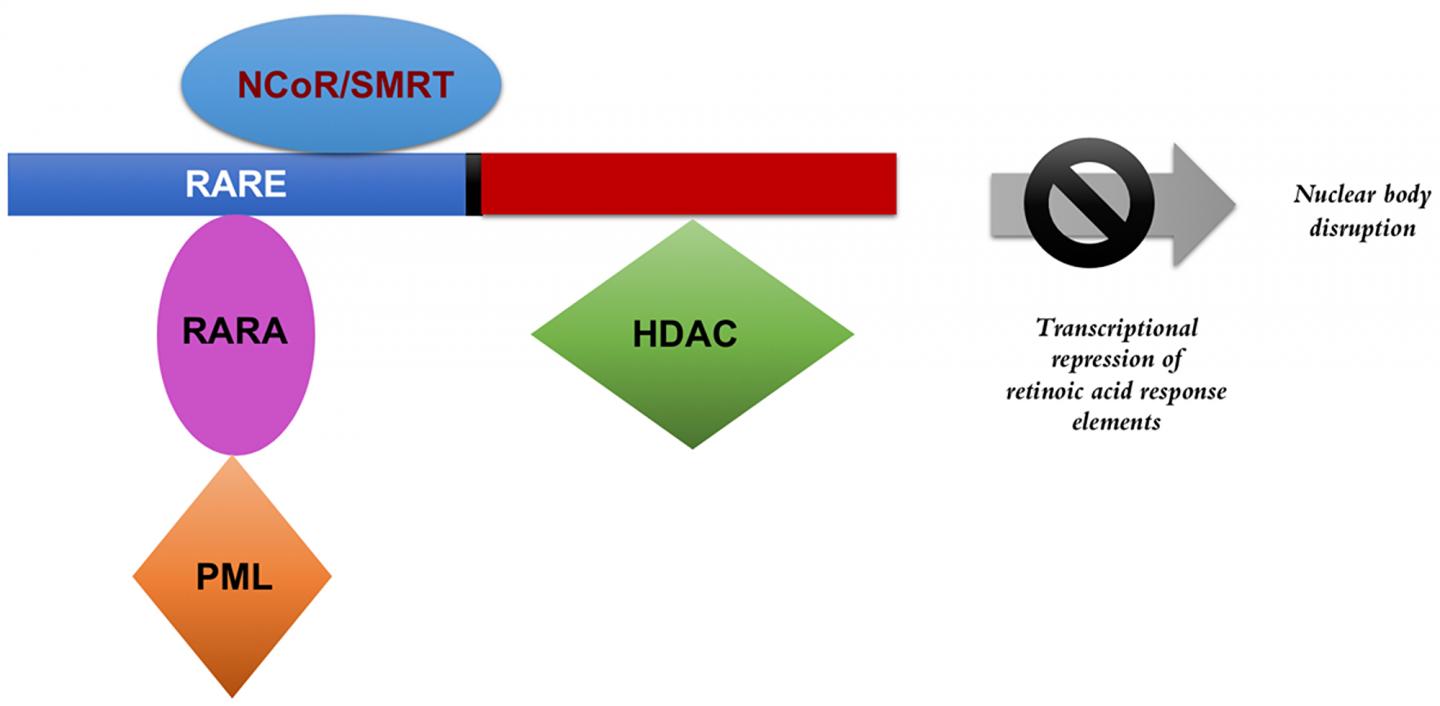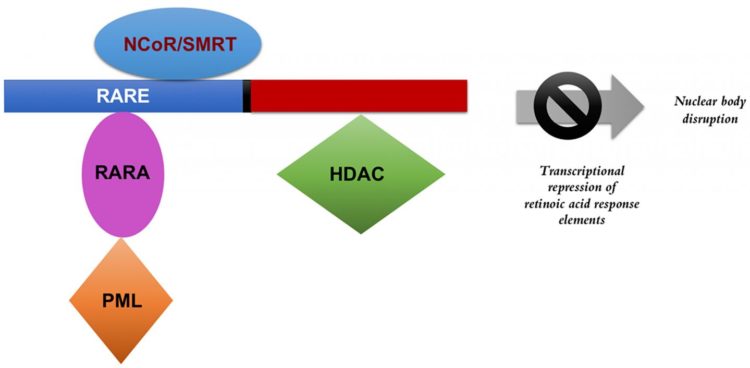Oncotarget Volume 11, Issue 11 reported that relapsed APL, particularly in the high-risk subset of patients, remains an important clinical problem.

Credit: Correspondence to – Joaquin J. Jimenez – [email protected]
Oncotarget Volume 11, Issue 11 reported that relapsed APL, particularly in the high-risk subset of patients, remains an important clinical problem.
The probability of relapse is significantly higher in the high-risk subset of patients undergoing treatment for APL; overall approximately 10-20% of APL patients relapse regardless of their risk stratification.
Alternative agents and approaches considering these clinical outcomes are needed to address ATO resistance as well as the relapse rate in high-risk APL.
Dr. Joaquin J. Jimenez from the Dr. Phillip Frost Department of Dermatology and The Department of Biochemistry and Molecular Biology, Miller School of Medicine at The University of Miami, in Miami Florida USA the first author on a paper with Dr. Andrew Schally, winner of The Nobel Prize in Physiology or Medicine and founding Oncotarget Editorial Board member said, “In recent decades, treatment of Acute Promyelocytic Leukemia (APL) has served as a representation of targeted therapy and has reflected the power of translational research.“
“In recent decades, treatment of Acute Promyelocytic Leukemia (APL) has served as a representation of targeted therapy and has reflected the power of translational research.”
– Dr. Joaquin J. Jimenez, Dr. Phillip Frost Department of Dermatology and The Department of Biochemistry and Molecular Biology, Miller School of Medicine at The University of Miami & Dr. Andrew Schally, winner of The Nobel Prize in Physiology or Medicine and founding Oncotarget Editorial Board member
The introduction of all-trans retinoic acid, as well as of arsenic trioxide in the treatment of APL, was crucial to achieving the current remarkable cure rates.
The initial evidence of the differentiating properties of retinoic acid and its potential to be used therapeutically came in 1980, first using the HL-60 cell line as a model for APL.
Shortly after the introduction of retinoic acid into the therapy regimen of APL, the need arose for addressing retinoic acid resistance.

Figure 1: PML-RARA transcriptional repression. he presence of the fusion protein interferes with the transcription of retinoic acid response elements and disrupts the formation of nuclear bodies. The fusion protein, in the absence of pharmacological doses of retinoic acid, recruits co-repressors to silence gene transcription related to differentiation and prevents apoptosis. NCOR: nuclear receptor corepressor, SMRT: silencing mediator for retinoid and thyroid hormone receptor, RARE: retinoic acid response elements, RARA: retinoic acid receptor alpha, PML: promyelocytic leukemia protein, HDAC: histone deacetylase.
Furthermore, up to 50% of patients undergoing treatment will develop differentiation syndrome; a common side effect of differentiating agents.
An evaluation of four clinical trials involving low-risk APL patients from 2010 2014 showed overall survival rates ranging from a low of 86% after three years to a high of 99% after 4 years.
The Jimenez Research Team concluded in their Oncotarget Review, “the biochemical and mechanistic research on APL over the past few decades has led to a unique understanding of this disease and the treatment options, ushering in an era of targeted therapy. Despite remarkable scientific advances in treating APL, some issues still remain, concerning high-risk patients and patients exhibiting an uncharacteristic translocation. The use of HI-60 and NB4 cell lines will continue to be beneficial for future studies on APL since they have already shown a remarkable translational potential and will help address the therapeutic needs of patients that do not respond to conventional treatment. Further studies, addressing aspects of differentiation, nuclear body formation, and degradation of the fusion protein are essential for advancing the treatment of APL and targeting it towards each affected individual. The investigation for alternative therapies for relapsed APL patients and the introduction of clear, defined treatment guidelines in each risk classified group are of particular concern to be addressed.“
Sign up for free Altmetric alerts about this article
DOI – https:/
Full text – http://www.oncotarget.com/index.php?journal=oncotarget&page=article&op=view&path[]=27513&path[]=90088
Correspondence to – Joaquin J. Jimenez – [email protected]
Media Contact
Ryan James Jessup
[email protected]
202-638-9720
Original Source
http://www.
Related Journal Article
http://dx.





